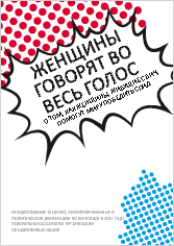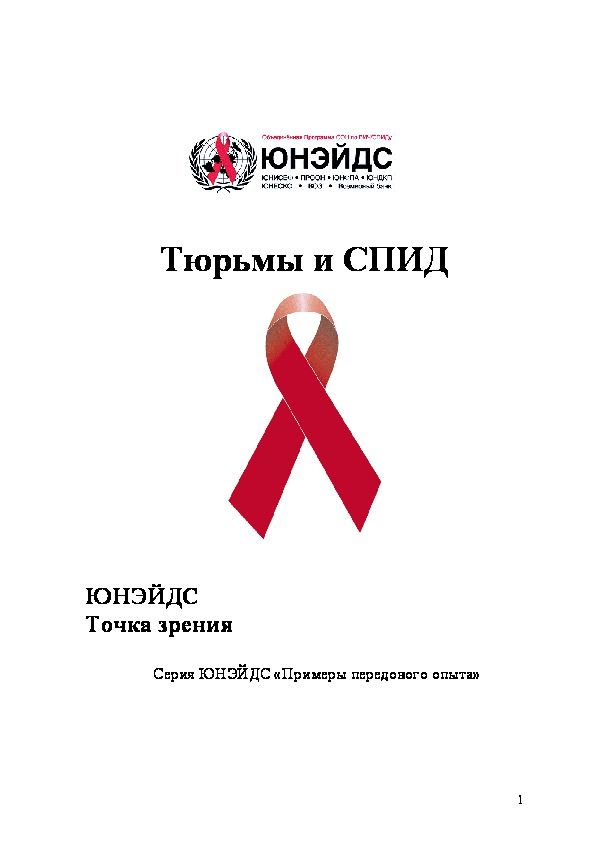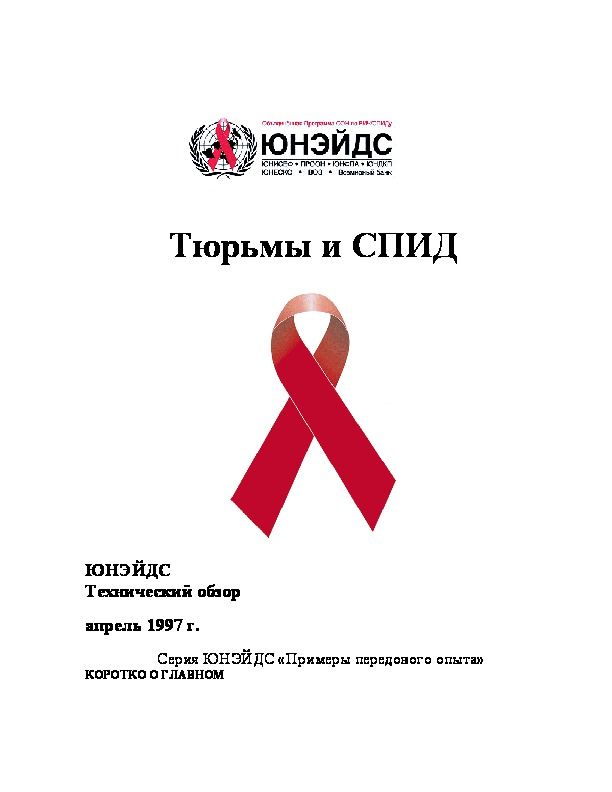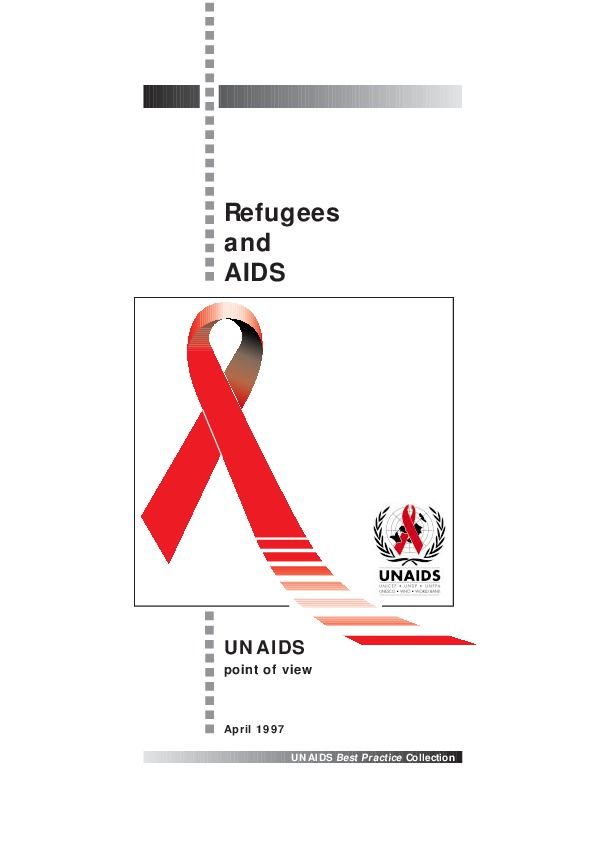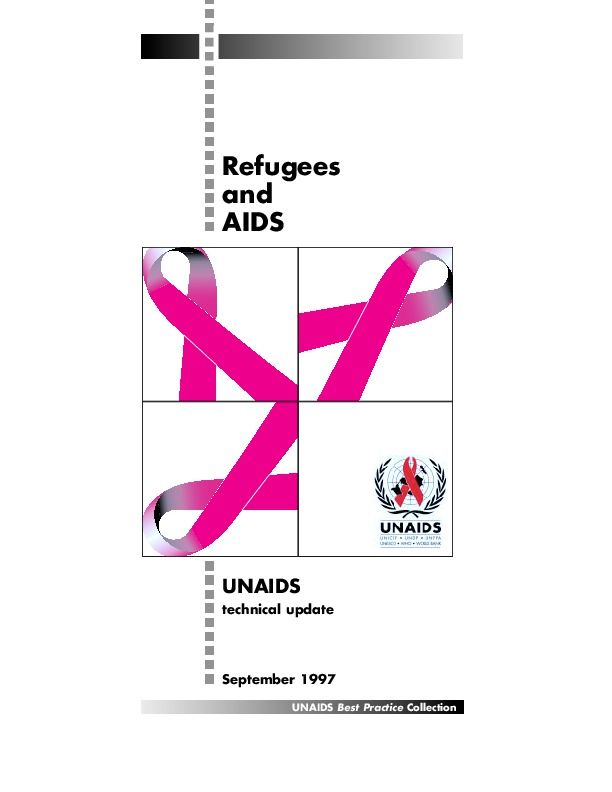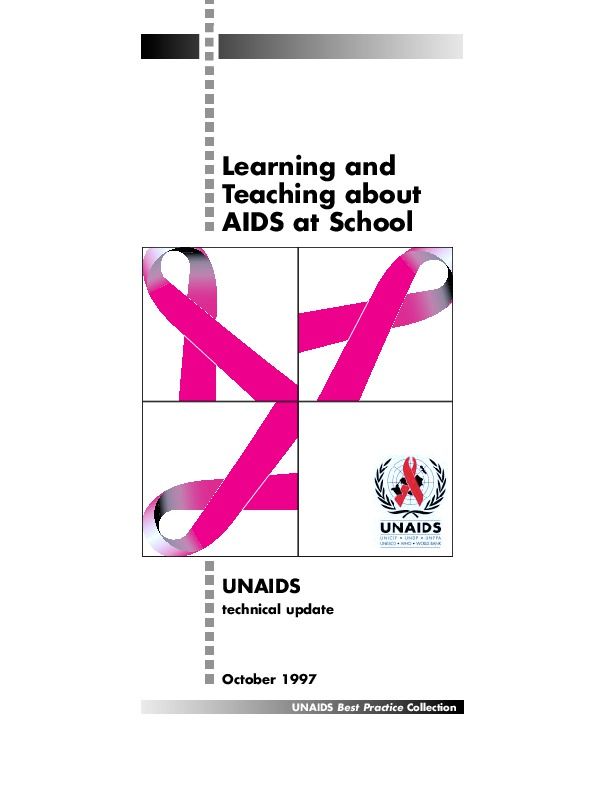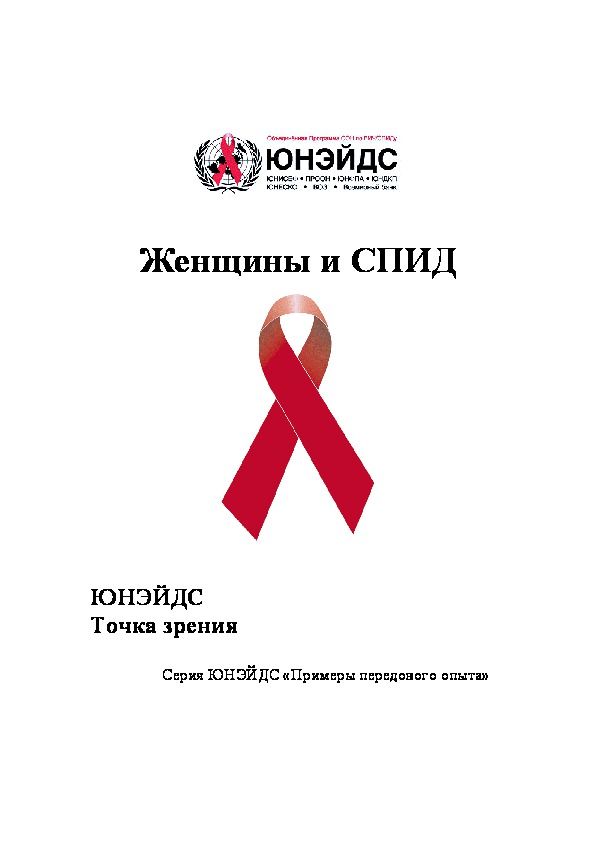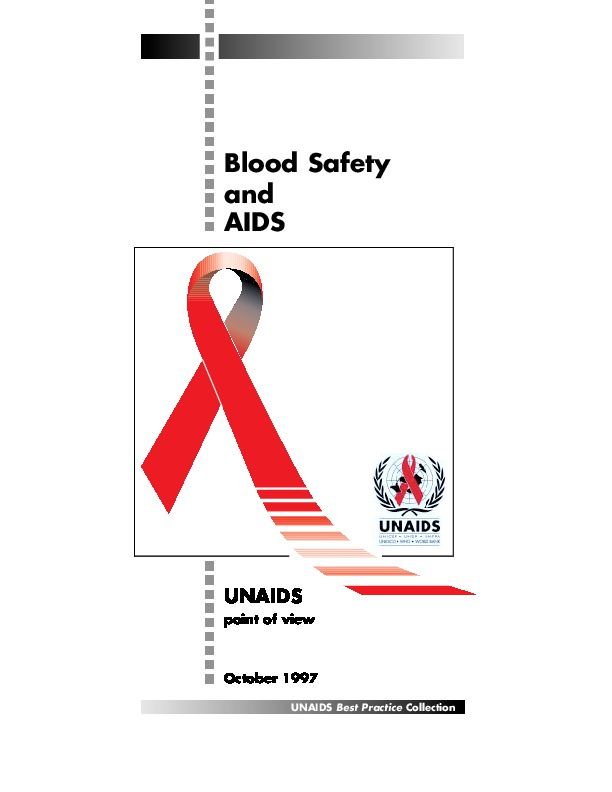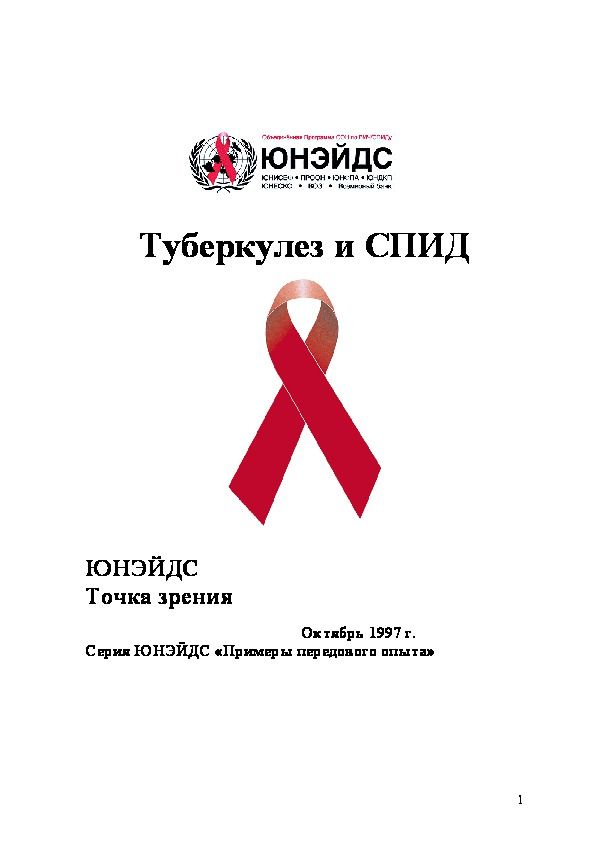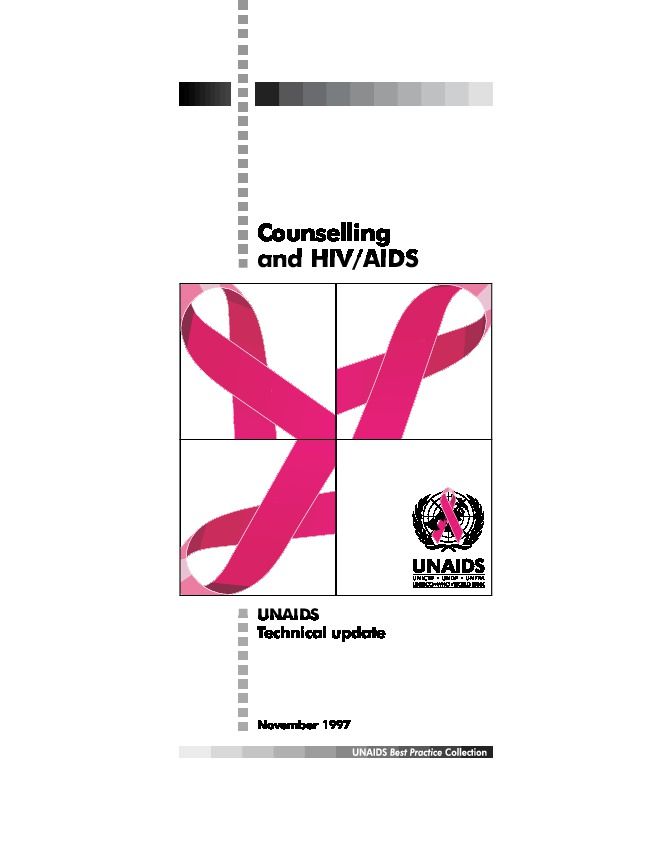Documents
Женщины говорят во весь голос: О том, как женщины, живущие с ВИЧ, помогут миру победить СПИД.
11 декабря 2012 года.
Хотя женщины и составляют половину населения планеты, их положение нельзя назвать равноправным. Это особенно очевидно, когда речь заходит о ВИЧ. Половина всех людей, живущих с ВИЧ, – женщины, но многие из них не получают необходимой помощи или же не знают своего статуса. Несмотря на многочисленные свидетельства успехов, женщины по-прежнему сталкиваются с неравенством, которое препятствует полной реализации потенциала мер противодействия СПИДу.
Documents
Refugees and AIDS : UNAIDS point of view
04 апреля 1997 года.
This paper discusses the precarious existence of refugees and why HIV/AIDS is such a critical factor to them (a lack of a safe blood supply, the emergence of prostitution in exchange for food and other essentials, and an insufficient supply of condoms and health care). The report also documents various facts and figures, and offers suggestions as to how issues regarding refugees and AIDS can be handled.
Documents
Refugees and AIDS: UNAIDS Technical update
24 ноября 1997 года.
Documents
Learning and teaching about AIDS at school
24 ноября 1997 года.
Young people are especially vulnerable to HIV and other sexually transmitted diseases (STDs). They are also vulnerable as regards drug use (and not just injected drugs). Even if they are not engaging in risk behaviors today, they may soon be exposed to situations that put them at risk. Very often they cannot talk easily or at all about AIDS, or about the risk behaviors that can lead to HIV infection, at home or in their community. However, most of them do attend school at some point, and school is an entry point where these topics – often difficult to discuss elsewhere - can be addressed.
Documents
Женщины и СПИД
24 ноября 1997 года.
Женщины продолжают завоевание позиций равенства с мужчинами. В тех случаях, когда они образованны, способны зарабатывать, и в равной степени с мужчинами защищены законом, они имеют возможность в определенной мере управлять экономическими, социальными и личными аспектами своей жизни. Однако для миллионов женщин эти цели по-прежнему слишком далеки. Именно эти женщины наиболее беззащитны перед ВИЧ, - вирусом,
вызывающим СПИД.
Documents
Туберкулез и СПИД
25 ноября 1997 года.
Растущая эпидемия вируса иммунодефицита человека (ВИЧ) вдохнула новую жизнь в старого врага - туберкулез. Эпидемия ВИЧ подстегивает распространение туберкулеза и повышает риск заболевания туберкулезом для всего населения. Для ВИЧ-инфицированных риск заболевания туберкулезом особенно высок, а его последствия чаще всего смертельны.
Documents
Counselling and HIV/AIDS
18 мартаа 1998 года.
HIV counselling has been proved effective in various ways. An evaluation of The AIDS Service Organisation (TASO) in Uganda has shown that it helps people accept and cope with the knowledge of being HIV-positive, and furthermore encourages acceptance from families and communities. A Rwandan study has proved that HIV counselling can help people make decisions about HIV testing, as well as reduce HIV transmission. Yet there is a reluctance among some policy-makers and service managers to give counselling its proper due as a discipline in which trained practitioners can produce measurable, useful results. For this reason it is under-resourced and not fully appreciated.

